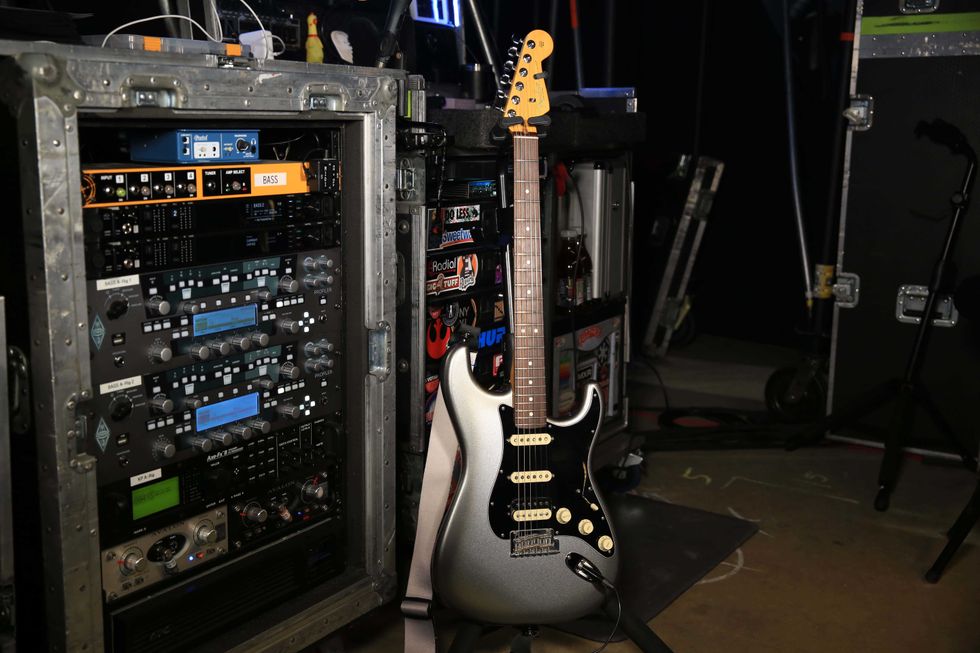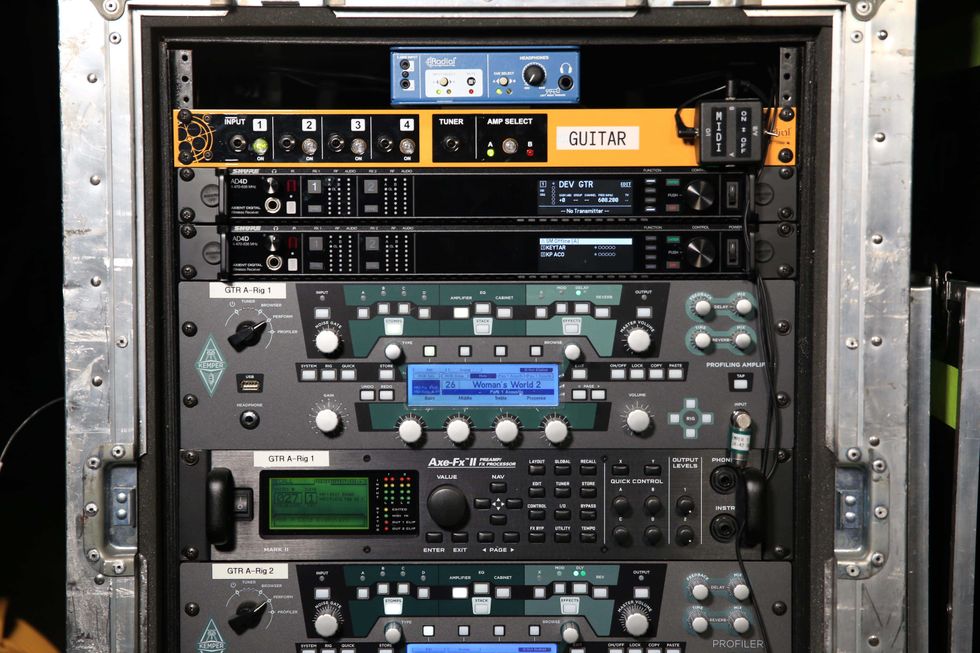Nels Cline and Julian Lage might seem like an unlikely pair. Cline is best known for his work with rock band Wilco, though the 58-year-old sonic tinkerer has recorded since the late 1970s in a range of improvisational and avant-garde settings, both as a sideman and leader. Lage, with his pure guitar tone, appears more straight-ahead, at least on the surface. At 26, the former child prodigy has played with jazz heavyweights like Gary Burton and Jim Hall, in addition to leading his own ensembles. He’s also delved into bluegrass and other rootsy idioms, as heard in his work with the Punch Brothers’ Chris Eldridge.
But Cline and Lage have many shared reference points, from the compositional approach to guitar improvisation of their late friend Hall to the chamber jazz that reed player/composer Jimmy Giuffre (another Hall associate) pioneered in the 1950s. After several years working as a duo, Cline and Lage have developed an uncommon chemistry, witnessed to exciting effect on ROOM, an album full of delightful surprises that levels the stylistic playing field: Cline abandons his customary pedalboard, while Lage, freed from his usual structures, plays with uncharacteristic freeness.
We chatted with Cline and Lage about their relationship, their processes, how they recorded ROOM, and their mutual enthusiasm for old, battle-scarred guitars.
How did your duo come about?
Nels Cline: It all started a few years ago with an article I wrote for Jazz Times about 10 of my favorite Jim Hall tracks. Jim’s friend and manager, Brian Camelio—also a guitarist—liked the article and brought it to Jim. It turned out I lived a block away from Jim—he was on 12th Street for many years, and I was on 11th—and Brian and Jim started inviting me to what we called “crony lunches,” with a rotating cast of musicians at a restaurant at the end of my block. Then one day, this delightful young gentleman, Julian, showed up.
Julian Lage: I was first invited to one of the lunches on a day I had a rehearsal that I had some trepidation about, thinking I wasn’t the right player for the band. I remember realizing if I ended up not being on the record, I could hurry up and make the lunch on time. At the last minute a more obvious player materialized for the project, so I dashed off and made the lunch.
Cline: I have a lot of guitars in New York and, sensing a guitar-geek factor, I had Julian over to show him some of them. I remember being in my kitchen and handing Julian this little koa Oahu acoustic from the 1930s. He was kneeling down, and he played only two or three notes, the simplest things in the world, but they sounded so great, with tremendous sensitivity oozing out.
Lage: I immediately responded to Nels’ warmth and curiosity. I knew right away he was a fellow seeker, on a deep musical mission. It would have been great just to hang out with him and talk shop, but to work together and make a record was really the cherry on top.
Cline: I had a gig lined up at [Manhattan record store and performance venue] Downtown Music Gallery and was planning on doing a drum-less chamber-jazz group in the mold of Jimmy Giuffre. But at the last minute the cellist couldn’t make it. I considered asking Julian to do the gig, but was reluctant because I’d done so many guitar duos. But I did ask him, and we never looked back.
Can you talk a little bit about how you create springboards for improvisation.
Cline: I started out with what I call “squibs”—tiny written areas of music to be connected with free improv. “The Scent of Light,” for example, is one of the first pieces I presented to Julian. “Amenette” and “Racy” are just lines—we didn’t even write anything down. I would play an idea, Julian would harmonize on the spot, and we’d take it from there before going completely free.
Other tunes were, in a sense, more traditional. “Whispers from Eve,” for instance, was inspired by my late friend Eric Von Essen, with whom I played from the late ’70s to the early ’90s. The piece contains the types of chords he liked to use in quartets and duos—I learned a lot from him, harmonically. Julian wrote “Calder,” another harmonic workout. And “Blues, Too” is a tune I wrote in the ’90s and have played with the Nels Cline Singers as well as with Jim Hall.
We arranged everything together. Quite often I’d come up with something I felt was complete, but Julian would learn it and transform it into something else before I could notate it. Overall, we went for a sort of chamber-jazz aesthetic. Not about jazz blowing, but about chamber music, playing for the love of 20th-century composers like Morton Feldman and of spontaneous composition, for the occurrence of anomalous chord clusters and strange polyphonies—things that other people might not be as excited by as we are. In playing our repertoire, we follow each other and come up with sometimes uncanny unisons and amazing pauses, harmonic events that are both accidental and rewarding.
Lage: The squibs are distinctive in nature. Even if only four or eight bars long, they’re very directive and can sustain long improvisations. Nels writes in such a way that leaves so much room for spontaneous composition. It’s so cool that, in this setting, nothing is off-limits—a strong backbeat groove is given equal consideration to something more fluid. It’s really a shared concept, as Nels says—a tip of the hat to Jimmy Giuffre and that whole scene.
Photo by Mike Bouchard.
You seem to be making maximal use of minimal gear. What guitars are you
playing in this duo?
Cline: We each used just two guitars. I played a pair of Gibsons: a 1962 J-200 and a 1965 Barney Kessel.
Lage: I played my 1939 Martin 000-18 and my Manzer Blue Note.
The J-200 and the 000-18 don’t seem like obvious choices.
Cline: As a member of Wilco, I’ve become aware of many marvelous acoustic guitars through Jeff Tweedy. He has two different J-200s that he brings on the road. As an aside, when they’re restrung, he has me play the guitars to get my corrosive sweat on the strings—he kind of hates new strings. In any case, when I played a J-200 in St. Paul, Minnesota, at Willie’s American Guitars a few years ago, its neck felt so much like the one on my Barney Kessel. The guitar was kind of beat and not outrageously priced, so I bought it.
Then last year I had an almost career-ending nerve pinch, which gave me trouble moving my fretting fingers. I had limited fret-hand strength and really struggled to hit hefty low chords, like an F, and the J-200 was great because that fast neck is so easy to play. Its sound has an interesting evenness—it’s not particularly punchy, but it’s reasonably loud, considering the J-200 has a general reputation as the “Quiet Giant.” Timbrally speaking, it adds a nice contrast to Julian’s smaller-bodied Martin.
Lage: The 000-18 represents part of music culture in a lot of old-time styles—it’s definitely part of the narrative. But with Nels, whatever makes appropriate sounds as a vessel for your imagination is cool. It’s awesome to do the unexpected and use a 1930s Martin for free music. I’ve got such a close relationship with that guitar. It doesn’t sound particularly old-timey like some older instruments do. It’s relatively balanced and is somehow neutral and distinctive at the same time.
Julian, how did you score the Martin?
Lage: I looked for the right prewar Martin for a long time, and finally my friends at Retrofret in Brooklyn—really wonderful people—loaned me the guitar for a couple of weeks. I too was coming out of a left-hand injury, the result of years of tension and buildup, and I’d begun to think about restructuring my technique. Many of the other Martins I tried were beautiful and sounded amazing, but were so fatiguing to play. But the 000-18—a more or less completely busted guitar that had been lovingly brought back to life by [repair expert] TJ Thompson—was so comfortable and easy to play. I sat down with it for seven hours straight when I took it home, which in itself was an amazing feat, considering the status of my fret hand. The guitar felt like an entry into rehabilitation and, injury aside, it was just one of those guitars whose magnetic quality makes it hard to put down. I talked to my friend and collaborator Chris Eldridge about the guitar and he said, “If you don’t buy it, I will,” so I just had to acquire it.
Nels Cline's Gear
Guitars
1962 Gibson SJ-200
1965 Gibson Barney Kessel
Amps
ZT The Club
ZT Lunchbox
Effects
None
Strings and Picks
GHS .013 string sets
Dunlop Ultex 1.14 mm picks
Julian Lage's Gear
Guitars
Linda Manzer Blue Note
1939 Martin 000-18
Amps
Carr Rambler
Effects
None
Strings and Picks
D’Addario .012 electric string sets (for Manzer)
D'Addario .012 acoustic string sets (for Martin)
BlueChip TP50 and TP45 picks
What about the Manzer?
Lage: I got that guitar when I was 11, which is insane when I think about it. I grew up in Santa Rosa, California, and my parents would take me every summer to the Healdsburg Guitar Festival [a show of independent luthiers]. One year, I thought the Blue Note was the greatest guitar at the show, and I found Linda to be so lovely and endearing. A week or two later, I wrote and asked her—only out of curiosity, because I couldn’t have afforded an instrument like that—how long her waiting list was. She wrote back to let me know that the guitar had been built for someone who’d developed a hand issue and now wanted something with a different neck shape. She asked if I’d like her to send it to me right away, with no talk of money. We eventually worked out a deal where I could pay for it in little increments: 100 dollars here and 50
there. All these years later, I still absolutely love the guitar. It’s got this laminated top with a relatively flat arch, and it works beautifully in electrified situations, without the feedback I might get from a more traditional instrument.
Nels, talk a little about the Barney Kessel—it’s kind of an underdog among the Gibson hollowbodies.
Cline: I also became aware of the Barney Kessel through Jeff Tweedy, who has four or five of them. It’s a very good guitar, especially for a fake jazz guy like myself [laughs]. With its two pickups, it offers more tones than a traditional jazz guitar, but it can still cover that territory.
What amplifiers do you use as a duo?
Cline: I went into the studio with an amp that will rename nameless, a very warm-sounding low-wattage amp made from repurposed parts. But our engineer, Chris Allen, said its high noise floor was driving him nuts, so I called my wife [Yuka Honda of the band Cibo Matto] and asked her to bring over my ZT Club—basically the amp I use all over New York, a made-in-China 200-watt amp that weighs next to nothing.
Lage: In the studio I used an awesome 1x12 combo, a Carr Rambler that Nels has gifted me, which I’m so happy to be the guardian of.
Cline: I have another Carr—an Impala—that I love, but it’s too heavy for this old man to cart around to local gigs [laughs]. Around town I sometimes play through a ZT Lunchbox, which is featherweight and sounds great, plus a great 1959 Gibson Crest.
Photo by Mike Bouchard.
Nels, as a player known for a masterly use of effects, what was it like to play without them?
Cline: People might think of me as Mr. Stompbox, but in the 1980s I played as much acoustic without effects as I did electric, so it wasn’t exactly foreign for me. It was very freeing to work with the limitation of the pure tone of the guitar, and not a world of other sonic possibilities. I didn’t even use a volume pedal on the record, and I’ve had my foot glued on one of those since the ’70s, except when playing acoustic. I love how the guitar is such a malleable instrument, with so much potential for exploration—an almost infinite amount of variation and manipulation.
Coming from a more traditional background, where do you stand on effects, Julian?
Lage: I’ve never really known what to do with effects pedals, so I’ve tended to avoid them. But I’ve always been a nerd for electronic music, in particular musique concrète. On the computer I love experimenting with samples, leaning toward glitchy, that create a narrative but don’t necessarily fit into song form. I have a project whose working title is Machine Sorry, where I’m exploring more of that world with Armand Hirsch, a terrific player about my age who also plays in Bobby McFerrin’s group. And maybe I’ll bring electronic aspects to future collaborations with Nels.
The guitars sound so intimate and detailed on ROOM.
Cline: A lot of my work—especially in a rock context, like with Wilco—involves layers and layers of guitars, but on this record there are no overdubs or edits. It’s just like we’re playing together in my living room.
YouTube It
Nels Cline plays 12-string electric and Julian Lage plays his Manzer Blue Note in this dazzling, yet utterly melodic, 2014 Toronto Jazz Festival performance at the Horseshoe Tavern.
Lage: It also has to do with the recording process. We recorded everything with a mic on each guitar and each amp, and one on the whole room, making an aural snapshot of the setting. When done correctly, miking both the amp and the guitar makes a beautiful blur between the core of the acoustic sound and the amplified sound. When not done correctly, you can get a fat amp sound and a clicky acoustic. On this record, it’s done perfectly. It recreates what I experience in the studio: the amp behind me and this great acoustic resonance on my stomach.
What have you learned from each other?
Cline: Julian is a terrifying player—an astonishing technician. I’m probably delusional in thinking that I can sit next to this man and not sound like I’m just trying to keep up. He’s pushing me to play in a more technical way, to practice a lot more, and not go around thinking I’ve got it all nailed down. Also, Julian has such vast and deep musical knowledge—he’s played with jazz and bluegrass masters alike. I don’t really have a thorough grounding in any tradition. I’ve never aspired to be a master of any idiom, but just wanted to make music that reflects my tastes, from 20th-century art music to free improv to rock, or stuff that first excited me in high school, like Weather Report, Tony Williams Lifetime, and Miles Davis’ electric period. It’s awe-inspiring to be in the presence of a player like Julian who’s so steeped in jazz.



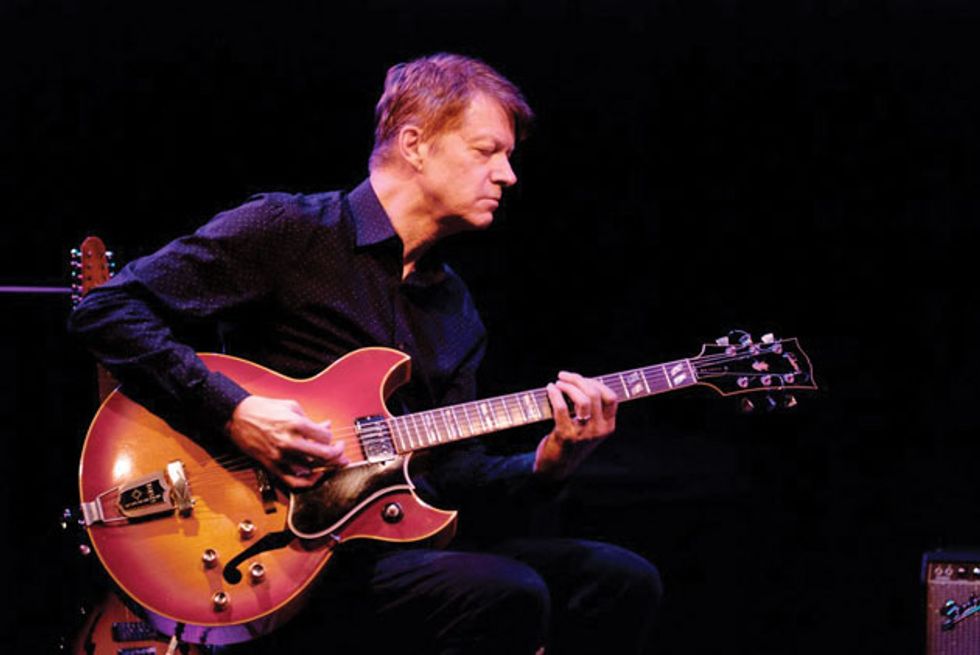

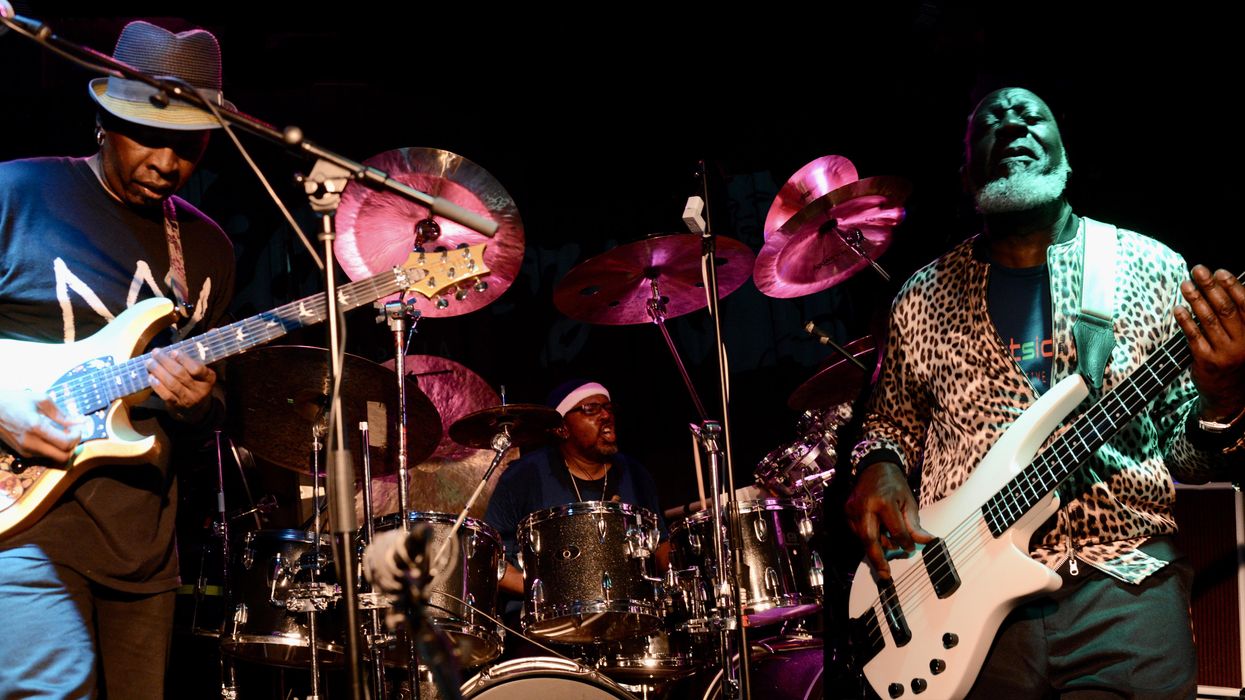


![Rig Rundown: AFI [2025]](https://www.premierguitar.com/media-library/youtube.jpg?id=62064741&width=1245&height=700&quality=70&coordinates=0%2C0%2C0%2C0)












 Shop Scott's Rig
Shop Scott's Rig

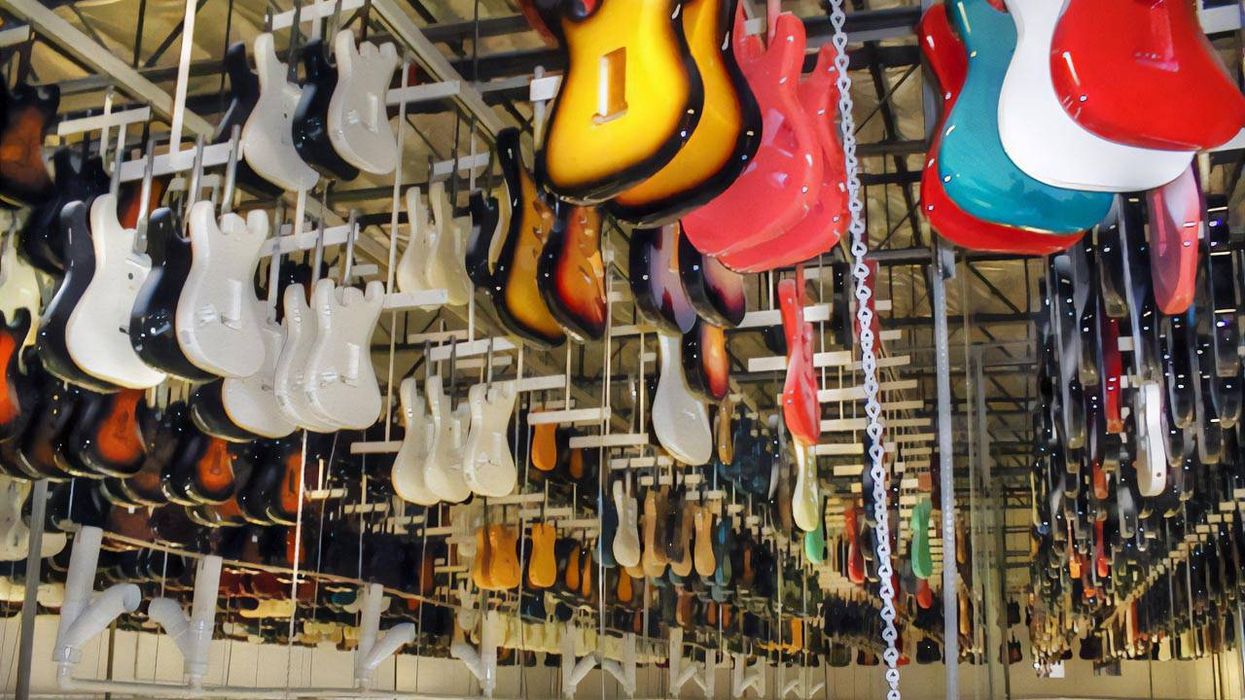

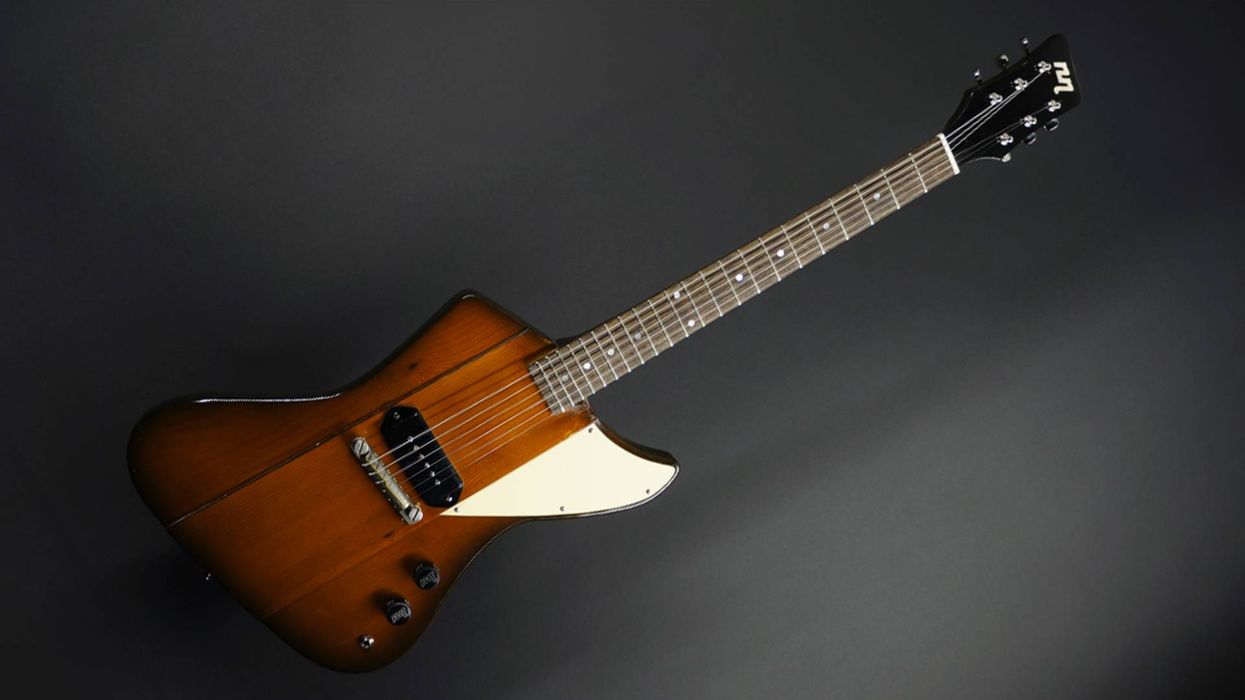









 Zach loves his Sovtek Mig 60 head, which he plays through a cab he built himself at a pipe-organ shop in Denver. Every glue joint is lined with thin leather for maximum air tightness, and it’s stocked with Celestion G12M Greenback speakers.
Zach loves his Sovtek Mig 60 head, which he plays through a cab he built himself at a pipe-organ shop in Denver. Every glue joint is lined with thin leather for maximum air tightness, and it’s stocked with Celestion G12M Greenback speakers.












![Devon Eisenbarger [Katy Perry] Rig Rundown](https://www.premierguitar.com/media-library/youtube.jpg?id=61774583&width=1245&height=700&quality=70&coordinates=0%2C0%2C0%2C0)
